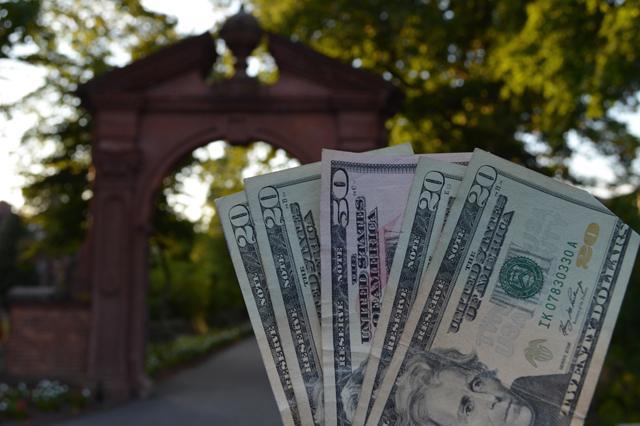
Photo by Nicole Williams
It is no secret that tuition rates have been increasing at an alarming rate for quite a while now, but Ramapo students will be given a reprieve from this ongoing trend. As reported by The Star Ledger, Ramapo College and the College of Saint Elizabeth decided to not raise tuition for this academic year, unlike other four-year New Jersey schools, who saw an increase in their tuition.
On average, those attending four-year colleges and universities will pay between 1.3 percent and 4.7 percent more during the 2014-15 school year, according to a Star Ledger survey of two dozen public and private schools. That statistic is only accounting for schools in New Jersey, but when compared with the national average, New Jersey schools' tuition far exceeds the mean.
According to a survey done by the College Board, on average, U.S. public colleges charged $8,893 for tuition last year, with the average private school charging $30,094 for tuition in the same time frame. This is compared to New Jersey colleges, where public college tuition range from $10,853 to $15,648 and private college prices range from $26,750 to $45,064, as reported by the previously mentioned Star Ledger survey.
“A large part of it was the defeasement of the bonds. We deceased two bond series which enabled the college to have a savings of over $3.5 million,” said Beth Walkley, Director of Budget and Fiscal Analysis.
In addition to the reduction of expenditures in utilities, salary elimination and auxiliary services, the overall savings of the college was $3.7 million allowing for a 0 percent tuition increase.
In regards to determining the tuition for each fiscal year, Walkley stated, “we look at what is important based on the strategic plan and we look to where we can reallocate those funds.”
According to Ramapo College’s 2015 fiscal year, operating budget salaries and benefits make up the majority of the budget at 62.5 percent. Benefits in the last three years for the college went up 35 percent with fringe benefits, workers compensation, disability and with healthcare being the most costly benefit, going up 49.5 percent. As far as benefits goes, the state covers the first 572 employees and the college has to pick up the rest, paying resident and auxiliary expenses in full, according to Walkley.
“The biggest factor, in regards to tuition costs in the future, is the state appropriations. The state has been keeping appropriations flat and only increasing the money they give out to fringe benefits,” said Walkley.
In the 2015 fiscal year operating budget the direct state appropriation, which is the money that goes directly to operating costs, has remained flat at $16,130 with funding for fringe benefits by the state increasing from $24,363 in the 2014 fiscal year to $27,145 in the 2015 fiscal year; that’s a 11.5 percent difference.
As to how the students feel about the freeze in tuition, it is a largely positive reaction.
“It’s good! It will be great not to have to dig deeper into the bank for money. I hope they continue this trend,” Keith Ellebracht, a sophomore, said.
Holly Goldfarp, a freshman, commented, “It is nice to have to pay a little less money for college; however, I do hope the state gives some more money to colleges like this. Education is important and more state funds will enable more people to have access to higher education which is crucial in the job market we have today.”
dirons@ramapo.edu





